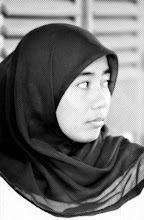Mary Anning (21 May 1799 – 9 March 1847) was a British fossil collector, dealer, and palaeontologist who became known around the world for a number of important finds she made in the Jurassic marine fossil beds at Lyme Regis in Dorset, where she lived. Her work contributed to fundamental changes that occurred during her lifetime in scientific thinking about prehistoric life and the history of the Earth.
Anning searched for fossils in the area's Blue Lias cliffs, particularly during the winter months when landslides exposed new fossils that had to be collected quickly before they were lost to the sea. It was dangerous work, and she nearly lost her life in 1833 during a landslide that killed her dog, Tray. Her discoveries included the first ichthyosaur skeleton to be correctly identified, which she and her brother Joseph found when she was just twelve years old; the first two plesiosaurskeletons ever found; the first pterosaur skeleton located outside Germany; and some important fish fossils. Her observations played a key role in the discovery that coprolites, known as bezoar stones at the time, were fossilised faeces. She also discovered that belemnite fossils contained fossilised ink sacs like those of modern cephalopods. When geologist Henry De la Beche painted Duria Antiquior, the first widely circulated pictorial representation of a scene from prehistoric life derived from fossil reconstructions, he based it largely on fossils Anning had found, and sold prints of it for her benefit.
Anning's gender and social class prevented her from fully participating in the scientific community of 19th-century Britain, dominated as it was by wealthy Anglican gentlemen. She struggled financially for much of her life. Her family were poor, and as religious dissenters, were subject to legal discrimination. Her father, a cabinetmaker, died when she was eleven.
She became well known in geological circles in Britain, Europe, and America, and was consulted on issues of anatomy as well as about collecting fossils. Nonetheless, as a woman, she was not eligible to join the Geological Society of London and she did not always receive full credit for her scientific contributions. Indeed, she wrote in a letter: "The world has used me so unkindly, I fear it has made me suspicious of everyone." The only scientific writing of hers published in her lifetime appeared in the Magazine of Natural History in 1839, an extract from a letter that Anning had written to the magazine's editor questioning one of its claims.
After her death in 1847, her unusual life story attracted increasing interest. Charles Dickens wrote of her in 1865 that "the carpenter's daughter has won a name for herself, and has deserved to win it."[3] In 2010, one hundred and sixty-three years after her death, the Royal Society included Anning in a list of the ten British women who have most influenced the history of science.





- Follow Us on Twitter!
- "Join Us on Facebook!
- RSS
Contact